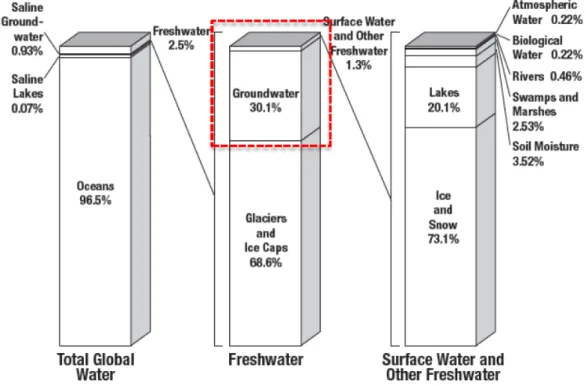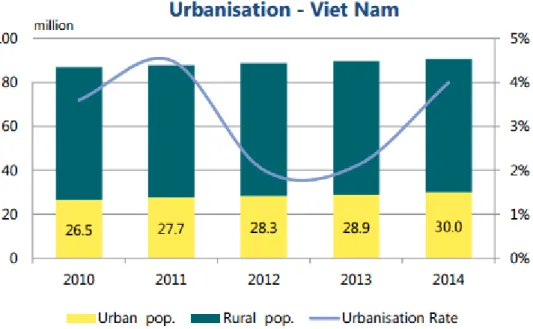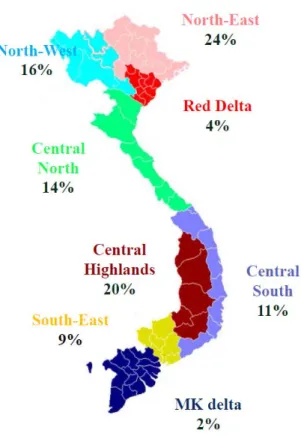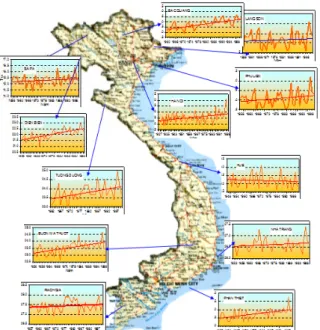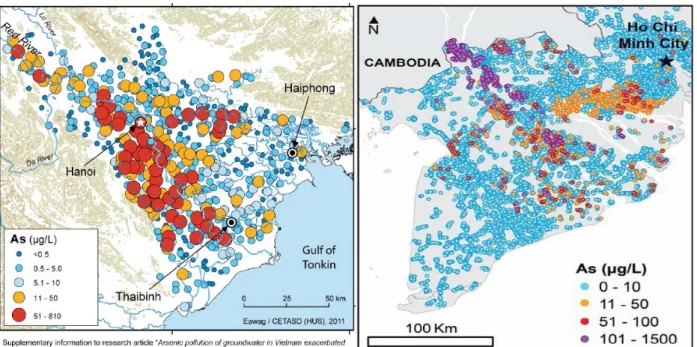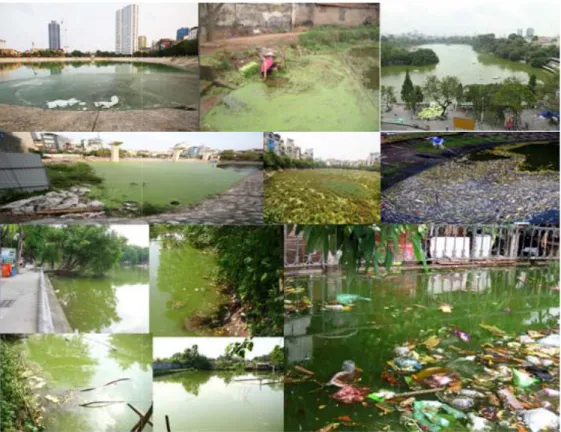†
To whom corresponding should be addressed.
Tel : +82-43-868-3573 E-mail : ahnjw@kigam.re.kr
에너지공학, 제26권 제1호(2017)Journal of Energy Engineering, Vol. 26, No. 1, pp.68~75(2017) https://doi.org/10.5855/ENERGY.2017.26.1.068
Impacts of Climate Change on Water Crisis and Formation of Green Algal Blooms in Vietnam
Thenepalli Thriveni
1, Namju Lee
2, Gnu Nam
2, Ahn Ji Whan
2†1
Hanil Cement, 302 Maepo-gil, Maepo-eup, Danyang-gun, Chungcheongbuk-do, 395-903, Korea.
2
Mineral Resources Research Division, Korea Institute of Geosciences and Mineral Resources (KIGAM), 124, Gwahagno, Yuseong gu, Daejeon-305350, South Korea.
(Received 7 February 2017, Revised 3 March 2017, Accepted 6 March 2017) Abstract
Global warming affects water supply and water resources throughout the world. In many countries, climate change affects significantly on the fresh water resources. Vietnam is exposed mainly, to landslides and floods triggered by tropical storms and monsoon rains, although storm surge, whirlwind, river bank and coastal line erosion, hail rain. In addition to the prevalent drought, there are many major water challenges, including water availability, stress, scarcity and accessibility, because of poor resource management. Fast growth of urbanization, industrialization and population growth, agricultural activities and climate change cause heavy pressure on water quality. Both domestic and industrial wastewater, as well as storm water shares the same drainage. The common facilities for wastewater treatment are not available. Therefore, wastewater is treated only superficially and then discharged directly into rivers and lakes causing serious pollution of surface water environment. In this paper, we reported the severe water crisis and massive green algal blooms formation in Vietnam rivers and lakes. This is the biggest evidence of climate change variations in Vietnam.
Key words : water crisis, water contamination, climate change, green algae
1. Introduction
Currently, there are several major climate change issues are challenging to the throughout the world.
Problems resulting from human impacts on the qual- ity of our environment. Climate change issues in- cluding, global warming, greenhouse effect, ozone depletion, aquatic environment issues such as water pollution, water shortage, ocean dead zones, water diversion, overfishing, air quality issues are acid rain, air pollution, nuclear ppollution, terrestrial en- vironmental issues are desertification, deforestation, soil pollution, waste disposal, mining and population
growth issues are habitat destruction, farming practi- ces, fertilizers & pesticides
(1). Based on this, the most serious problem is water shortage and water pollution. The distribution of earth’s water
(2)repre- sented in Fig. 1.
In 2014, NASA released ground water storage da-
ta about worlds major aquifers during 2002-2013. In
the world, several major aquifers had water storage
declines (mm equivalent water height). The average
depth of groundwater level below the surface in qp1
aquifer of Ho Chi Minh City, Vietnam
(3)(Fig. 2a
and 2b).
Impacts of Climate Change on Water Crisis and Formation of Green Algal Blooms in Vietnam 69
Fig. 1. Worlds fresh water sources (adopted from ref.2)
Fig. 2a. Groundwater storage declines (adopted from ref.3)
Thenepalli Thriveni, Namju Lee, Gnu Nam, Ahn Ji Whan 70
Fig. 3. Urbanization in Vietnam (adopted from ref.5)
Fig. 2b. Groundwater storage declines in Ho Chi Minh City, Vietnam (adopted from ref.3)
2. Ground Water Sources in Vietnam
Some researchers published on the water stress in Ho Chi Minh City, Vietnam and Vietnam is ranking the 12th most populous country in the world. Ho Chi Minh City is a rapidly growing with a high rate of urbanization and industrialization with fast growth
of population
(4). The urbanization rate from 2005 to 2010 was 3.5%, but now 4.0% was increased after the economy stabilized. After Industrialization throughout Ho Chi Minh City, thousands of labour- ers came from nearby provinces, contributing to a high population growth rate in suburban areas
(5)
